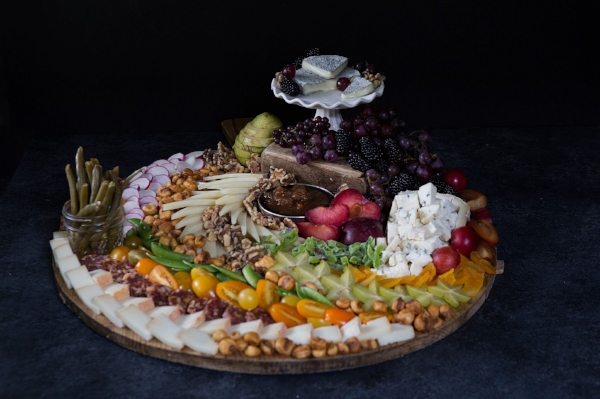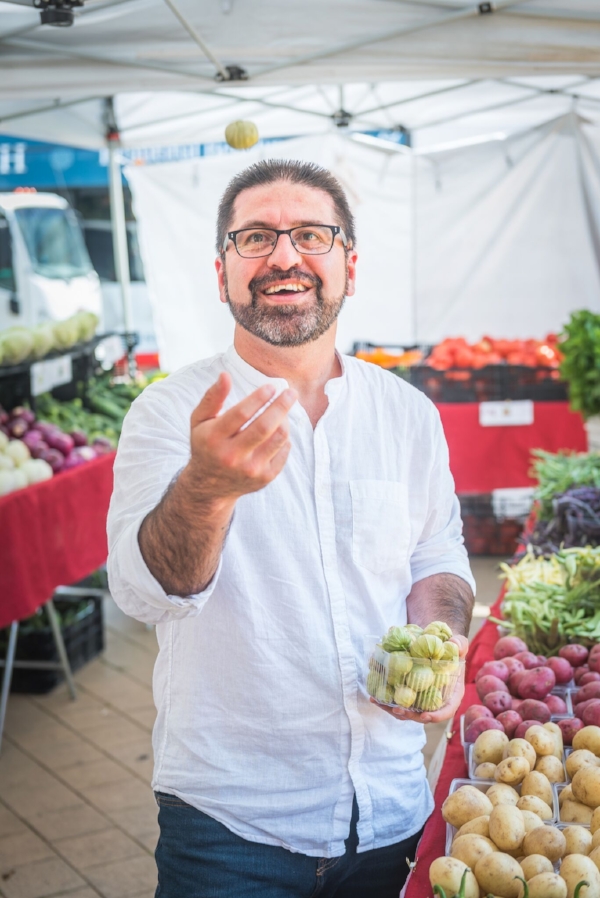Get on Board: Building Eye-Catching Cheese Spreads
/By Whitney Pipkin, Photography by Jennifer Chase
Artfully arranged cheese spreads like this one can elevate any gathering—and they’re surprisingly easy to create with just a few simple guidelines.
If throwing an elaborate dinner party isn’t in the cards this busy fall season, don’t give up on the occasion. Consider, instead, the humble cheeseboard which, in the hands of Alice Bergen Phillips, is anything but.
Phillips ran the cheese counter at Georgetown’s Via Umbria before breaking out on her own last year to start Cheesemonster DC, a cheese-based catering company. The name is a play on how customers often butcher the “cheesemonger” title (but, coincidentally, it also describes the effect a decent spread o’ cheese has on us these days).
“The biggest thing is that it makes you happy,” Phillips says as she arranges pennant-shaped slices of Manchego into a semi-circle at the center of a giant wooden board.
She suggests beginning every board with the cheese, finding a way to weave variety into each layer of its composition. Start by balancing contrasting flavors—salty and sweet, nutty and fruity, meaty and tangy—and continue with a variety of colors, sizes and textures.
“Once you get into the habit,” she says, building beautiful boards is “no more difficult than plunking cheese and salami on a plate.”
We asked Phillips, who will be opening her own cheese studio in Brightwood this fall, for some pointers on assembling boards worthy of their own occasion.
Using a combination of cheeses—soft and hard, sweet and earthy—to liven up your spread.
Change up your cheese game
Cows aren’t the only animals that produce cheese-worthy milk. Consider goat- and sheep-milk cheeses, which can be as delicious and complex as your friends’ dietary restrictions.
Balance the fresh, milky flavors of soft cheeses like burrata, with the intense flavors of aged Gouda or a nutty Gruyère. Don’t forget stinky, washed-rind cheeses and bleus.
Combine cheese textures: spreadable, crumbly, semi-hard and the aged ones with crunchy crystals of flavor.
Variation in color and size add depth and visual appeal to your cheese spread.
The Accoutrements
Shade: Wander through the farmers market, produce section or dried fruit aisle with a rainbow in mind. Balance the bright white of cheese slices with deep-red pomegranate or amber-colored dried apricots.
Size: Consider variations in the same hue, pairing a cluster of Concords with the tiny orbs of Champagne grapes and larger plums. The same rule can be applied to crackers of varying shapes and grains.
Style: Combine the juiciness of fresh fruits with the tartness of dried ones. Recently pickled carrots or dilly beans can be as good as fresh vegetables for dipping into soft cheese or spreads. They also give gluten-free folks a vessel for schmearing.
Salt: Don’t forget to leave room for sliced charcuterie, if it’s in the budget. Along with the usual salamis and prosciuttos, Phillips suggests trying artisanal jerky as an easy finger food.
Sidekicks: Olives, Marcona almonds and fancy corn nuts can provide salty balance or crunch to a cheese tray. Whimsical jars of honey or jams add a sweet finishing touch.
Including multiple types of cheese allows your guests to enjoy a mixture of flavors and textures.
Rules of Thumb
Try to offer at least three cheeses, even if they’re small slices for a party of two, to give the tray a balance of flavors.
How much should you serve? A good rule is 1½ to 2 ounces of cheese per person, before filling in the board with other fixings.
Make it edible. “A big pet peeve of mine is when cheese boards are offered in giant hunks,” says Phillips. “The biggest thing is making it easy for your guests to eat.” That said, don’t cut the cheese too far in advance or it could dry out.
Serve cheese at room temperature for optimal flavor. Out of the fridge, softer cheeses can come to room temperature in as little as 15 minutes, but some hard cheeses could take an hour. Set reminders.



































